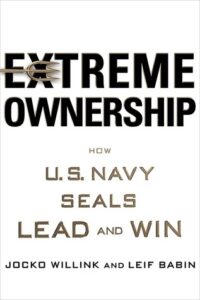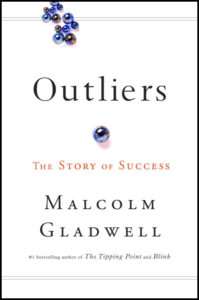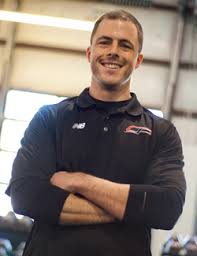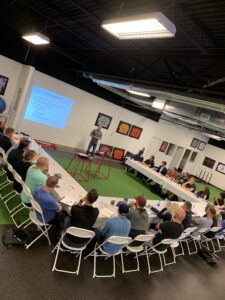
10 Random Thoughts on Long-Term Fitness Industry Success
This was my 14th year of speaking on the Perform Better Tour. It’s hard to believe that I’ve been a part of this great experience for a decade now, having given my first presentation back in 2007 at age 25. A few years ago, to “commemorate” my 10th year on the tour, I decided to devote my talk to, “10 Years, 10 Lessons: How to Perform Better in Business and Training.”
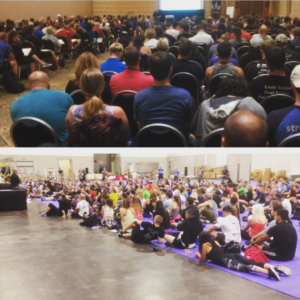
In the years I’ve had the honor of presenting on the PB Tour, a lot has changed in my life. I’ve gone from a single guy with minimal responsibilities to a married father of three daughters. We have Cressey Sports Performance facilities in both Hudson, MA and Palm Beach Gardens, FL, and my wife and I split our year between the two. We’ve got more than a dozen employees between the two locations. I’ve authored over 1,000 published articles, published six books and co-created seven video resources that have been sold in over 60 countries around the world. I’ve has been an invited guest speaker in six countries and over 25 U.S. states. This website now gets over 500,000 unique visitors each month.
I mention these things not to brag, but only to emphasize that I’ve learned a ton in the past 14 years. Unfortunately, it’s far too much to include in a single 75-minute presentation, so there were some important points that I couldn’t include. With that in mind, I thought a quick blog on the topic would allow me to bring things to the forefront. Since EricCressey.com typically sticks to the training realm, I wanted to highlight some fitness business lessons that have come to mind that didn’t quite make the cut for my presentation.
1. There are tremendous parallels among business, sports, and military success.
Whether it’s leadership or culture lessons, we always have something to gain in seeking out wisdom from other disciplines. I always have an audiobook “in play” on this front. Success leaves clues, regardless of the industry in which it occurs.
If you’re looking for a great book in this regard, I’d recommend Extreme Ownership.
2. Contrarians falter eventually – even if they don’t realize it.
Particularly in this social media era, you’ll see people who always insist on being contrarians. To me, this is a “short-term gain, long-term pain” strategy for professional success (or lack thereof). Being a “renegade” may seem appealing for garnering attention in the short term, but over the long haul, it’ll lead to a lot of broken relationships and dissatisfaction.
I spend a LOT of time withholding what I’d really like to say on social media because you never know who is reading and judging. It’s easy to say “I got this many retweets for ranting about XYZ,” but it’s impossible to quantify bridges burned in the process. How many people chose to avoid training with you because you came across as too negative on social media? You’ll really never know. To that end, I think that professional restraint has served me very well. I’d much rather be vanilla and get along with everyone.
3. You can change behaviors or beliefs, but it’s very rare feat to change both.
You’re better off picking one. I first read this in Robert Sutton’s Scaling Up Excellence, and as I thought back on my work with both employees and clients, it couldn’t have possibly made any more sense.
If someone is very set in their beliefs (e.g., I won’t change my diet), you need to change the surroundings to impact their behaviors (e.g., get junk food out of the house). Make it harder for them to eat like crap.
If someone is set in their behaviors (e.g., lifting with brutal technique), you have to change their beliefs (e.g., teach them what good technique actually is). Make it harder for them to “accept” lifting like crap.
4. Clients want novelty.
No matter how much we’ve all convinced ourselves that clients simply need the basics, the truth is that they’ll always be inclined to seek out novelty. With that in mind, if you don’t plan to create it in your training programs, you better create it in your training atmosphere and culture.
5. It’s much easier to spend other people’s money than it is to spend your own.
This is my response when people ask me whether I think it’s a good idea to bring on investors or bank loans when starting a fitness industry. When someone else is throwing in the cash, it’s pretty tempting to buy 17 different kinds of leg curl machines when you probably don’t even need one.
Think long and hard about whether you need every single dollar you spend when you open a gym.
6. I’m not sure that I buy the “10,000 Hour to Mastery” rule.
Malcolm Gladwell first introduced the 10,000 Hour Rule in his best-seller, Outliers. The premise was pretty simple: those who were remarkably successful in their fields had accumulated 10,000 hours of deliberate practice to attain a level of mastery.
As is the case with a number of other people in the field, I’m not so sure about this number anymore.
First, I know of a lot of people who have 10,000 hours that really haven’t done much of it with deep study. There are a lot of people who lead very distracted lives. “Deliberate” practice seems to mean something different to everyone.
Second, I think that fitness business success requires mastery in multiple realms. The chances of you getting sufficient amounts in all of these realms over 10,000 hours are really low. For instance, to build on what Michael Gerber presented in The E-Myth, I’d say that I’m a pretty good technician (coach) and entrepreneur (idea generator), but still have a lot to learn as a manager of people.
Third, remember that we’re in a constantly changing field; new research emerges every single day. Putting in 10,000 hours of archaeology training might make you a fossil expert for life, but in the fitness industry, putting in 10,000 hours early in your career and then getting comfortable makes you the fossil – and really quickly.
7. It’s good to know your personality and have others who do, too, to keep things in check.
I’m a giver, an eternal optimist, and an “idea guy.”
I have a wife that is quick to tell me when someone is taking advantage of my kindness.
I have a business partner, Pete Dupuis, who slows me down on the ideas front to think things through.
Having a great network is important, but having people who understand your personality and not just your expertise is invaluable.
8. Be succinct.
In coaching, you want your cues to be clear, concise, and firm. Don’t overwhelm clients with too many cues, and don’t give a cue unless you can deliver it with 100% confidence.
In networking, don’t send long emails, especially if it’s a first outreach. In this busy world, nobody wants to read a novel. Attention spans (mine included, admittedly) are growing shorter and shorter with each passing day.
With your resume, don’t list every single course that you’ve taken in college. If you include any at all, only highlight the ones that had a profound impact on you or give you a competitive advantage as compared to other applicants. In fact, you’re probably better off trimming your whole resume down. Nobody cares that you scooped ice cream for a summer job when you were 13.
9. Solve problems.
Every successful business in any industry solves a problem.
Paypal made currency transfer easier in an era of writing checks and cumbersome bank transfers. Venmo has taken this convenience to another level.
The Diaper Genie eliminated the problem of dirty diapers smelling up the house if you didn’t take the trash out every two hours. Don’t laugh, it sold for $75 million all the way back in 1999.
Cressey Sports Performance offered innovative baseball-specific strength and conditioning when others didn’t; we found a gap in the market and filled it.

With all this in mind, if there are already three Crossfits in your town, are you really solving a problem by opening the fourth? Unless you’re willing to go down the miserable path of competing on price, you better think long and hard about how you’re going to differentiate your offering so that you can actually solve a problem that hasn’t already been solved.
10. Peers are likely just as important as mentors.
This is a lesson I’ve learned from watching about 12 years worth of Cressey Sports Performance intern classes. Consider our staff the mentors who are doing the teaching, and the interns as peers to each other. The mentor group has evolved a bit, with some staff expansion/turnover and more expertise at the interns’ fingertips. The curriculum has evolved to provide more education, and fine tune the way we teach older material.
However, looking back, some intern classes seemed to thrive a little more than others. When you consider all the factors that could impact these outcomes, the one that seems to stand out is the camaraderie among the intern class. If they lived together – or at least spent a lot of time outside the gym together – they seemed to do even better. Peers have a pronounced impact on the way we process information and, just as importantly, how we reflect upon and utilize it.
Looking back on my own early career development, I was really fortunate to have great peers. My collaborative efforts with Mike Robertson in the early 2000s definitely stand out above all else on this front. Mike really pushed me to be better, and I think he’d say that I did the same for him.
Building on this, what becomes even more powerful is when a mentor becomes a peer. Alwyn Cosgrove really took me under his wing about a decade ago, and now that I’m a more seasoned fitness professional and business owner, I can contribute more of value to discussions with Alwyn. Likewise, I find myself reaching out to former interns of mine for advice all the time. And, sometimes we hire them to “formalize” their “peer” status.
As the old saying goes, you’re an average of the five people with whom you spend the most time. Make sure that it’s a good blend of mentors and peers.
Speaking of mentorship, my business partner, Pete and I will be hosting our fifth CSP Business-Building Mentorship on September 22-24. For the first time, this event will be offered in an online format. Pete and I have spent over 13 years crafting the operational systems and strategies that fuel CSP today, and we’re excited to pull back the curtain for fellow gym owners. You can learn more HERE.

